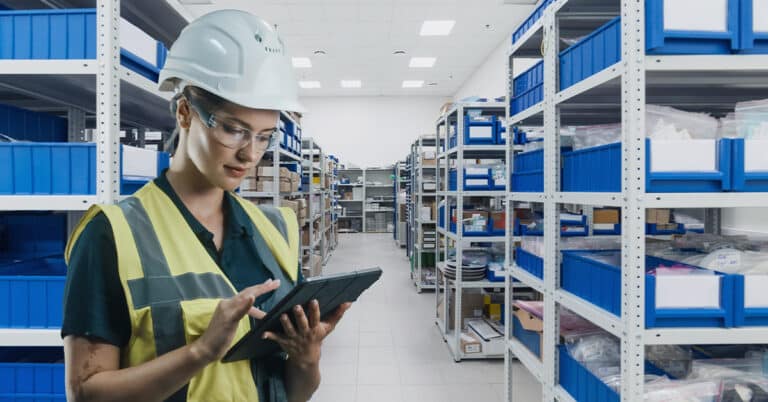All MRO asset management systems are not the same.
MRO is the acronym for “maintenance, repair and operations” — so any program that facilitates those actions technically qualifies as manufacturing MRO. Different applications and approaches to MRO can, however, have a big impact on manufacturing performance management and inventory management of a facility, while the most effective manufacturing MRO systems can significantly improve asset performance.
The History and Future of MRO
Traditionally, most MRO systems have skewed heavily toward reactive or corrective maintenance, applying only minimal preventive and scheduled maintenance as a matter of course.
There are a few reasons that this has been the case:
- Standard preventive maintenance adheres to common practice and manufacturer specs
- A lack of data to support practices beyond basic preventive maintenance — without adequate information, more proactive maintenance and inventory management would be a guessing game
- Lack of resources to engage in more advanced maintenance and inventory management — time, personnel, space and money
Facilities that practice this traditional form of MRO typically realize only the most basic manufacturing performance benefits of preventive maintenance for their assets. Namely, that their equipment will last as long as it’s supposed to, and possibly a bit longer. But as indicated by the points above, this is not for lack of trying on the part of a facility owner or manager. Rather, the necessary data, practices and preventive maintenance strategies have simply not been readily available, and most facilities are doing the best that they can with the information they have.
Thankfully, MRO has advanced over the years — and an increasing number of companies have taken advantage of the performance management benefits that an updated, connected MRO asset management system can offer. One of the primary reasons for the advancement and improvement of MRO is the availability of data and the means to make sense of it. With the ability to track more aspects of asset performance, facilities can move beyond standard preventive maintenance strategies to a more proactive and predictive approach to manufacturing asset management.
Improving Asset Performance with Proper MRO
Utilizing MRO properly is when organizations take full advantage of the tools and information that are currently available in order to maximize the value and performance of your equipment and assets.
These tools include:
- Equipment sensors and monitors to gauge the health and performance of machinery and components
- Connected equipment to collect and collate data
- Data management systems to store and analyze the collected information
- The personnel or partner to operate and implement data-based MRO solutions
One additional point, which you’ve checked off by reading this piece, is the desire and willingness to improve your own MRO implementation. These types of changes can be disruptive and, let’s face it, costly upfront. However, the return on investment from MRO improvements can be significant — and is often realized within just a few years of the initial layout.
Areas in which you can improve asset performance and inventory management with updated MRO include:
- More targeted maintenance and repairs — One issue with traditional preventive maintenance is you can never be sure that you’re treating an actual issue or simply improving your odds of doing so. The information and data provided by the connected sensors and monitors of an updated MRO system can provide unprecedented information about impending equipment or component failure, meaning you can address an issue before it happens.
- Less unplanned downtime — Downtime is never good for a manufacturing facility, but unplanned downtime is where you and your customer suffer the most and money is often lost. By implementing a predictive maintenance plan, a modern MRO program can reduce unexpected downtime significantly — keeping you on schedule.
- Improved inventory management — Inventory management has forever been a slippery slope. A limited amount of space must be allocated to replacement parts, orders and deliveries must be continuously managed and much of that management process relies on gut feeling or historical information, which is not always a reliable indicator of future needs. Updated MRO can benefit your inventory management process by increasing automation, providing exponentially more data to support more accurate ordering, and reducing wait times or eliminating overall wait times for critical spare parts.
- Reduced proprietary spending — Proprietary spending — a commitment to MRO parts from one OEM or supplier – can drive costs through a lack of competition. You can reduce proprietary spending in inventory management — sometimes significantly — by identifying parts that can and should be sourced elsewhere at a lower cost or a higher quality (such as low-criticality parts).
- Consolidated spending through aggregators — Aggregators increase the buying leverage of manufacturing facilities by taking a data-driven, bigger-picture look at part spending. They use that information to achieve better inventory planning, economies of scale and part availability while reducing equipment downtime, expensive long-tail purchasing and emergency ordering.
- LCC-sourced suppliers — With the data from a proper MRO implementation in hand, you can begin to seek LCC (low-cost country) suppliers that can offer major cost advantages with similar quality levels. Data allows you to identify MRO areas that are suitable for a first-phase LCC sourcing implementation, such as low-criticality commodities. You can also more effectively plan the expansion of an LCC that can significantly reduce inventory management costs.
Overhauling your MRO asset management system is certainly no small decision or undertaking, but it can provide tangible and major benefits on a favorable timeline. With the information in this piece, you’re now ready to take the first step.


